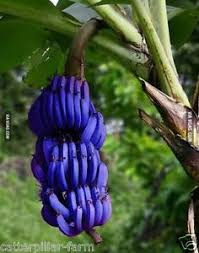Below are some pictures of actual ebay listings for fake pampas grass seeds. None of these are my pitcures. While they look great they DON'T actually exist and you will be funding ebay thieves.
When buying fake seeds from ebay thieves you will be sent some kind of seeds, but they will not grow into anything that looks like these pictures. You may be sent pampas grass seed, or you may be sent any random seeds that the thieves have on hand. By the time you grow them out and realise that you have been stolen from months or years will have passed and it is too late to do anything. Ebay makes a fortune from fake seeds so they won't remove any listing no matter how many times you report it.
Blue pampas grass
Blue pampas grass does not exist. The colours have been digitally altered. The second picture has been altered, but to make matters worse it is not even a picture of pampas grass!
 |
| Blue pampas grass does NOT exist |
 |
| This was listed on ebay as blue pampas grass seeds. This isn't even pampas grass!!! |
Q: Why not grow yellow and green pampas grass? A: because it does not exist. These bay thieves have used the first blue pampas grass picture above, but instead of clicking blue they made it yellow and green.
 |
| Where have I seen this picture before (hint: above in blue) |
Firstly, look at the size of these plants, they are huge, clearly not bonsai. Secondly and more importantly most of these colours don't exist. If anyone lists this please don't buy anything from them. You won't get what you paid for.
 |
| Bonsai pampas grass does NOT exist |
Mixed any seeds are a bad idea if some of the pictures don't exist. Some of these pictures are the same picture with the colours altered (pink, purple, the bottom left), which means that the seller is happy to deceive you. Who knows if you will even get pampas grass seeds? The top right hand picture, the green one, is the same as the first blue one I showed you. Please don't fund ebay thieves.
 |
| Mixed pampas grass, these colours do NOT exist |
Purple pampas grass does not exist. It doesn't matter how much you like the look of it, it doesn't matter how cheap they are, it doesn't matter that it has free postage, or that it is a bargain, or that the seller has 100% positive rating, or anything else, they don't exist so you should not buy seeds of them and you should never buy any other seeds from anyone who sells them.
 |
| Purple pampas grass does NOT exist |
Red pampas grass does not exist. Don't buy fake ebay seeds. Don't fund criminals.
 |
| Red pampas grass does NOT exist |
While this looks great, it doesn't exist. I think this picture was not made for fake ads, but somewhere a thief saw it and copied it. Don't buy seeds of these.
 |
| Multicoloured pampas grass does NOT exist |
These don't even look real, but they still trick people. Most of these colours do NOT exist, most of these are the same pictures with the colours altered. Anywhere that has the same picture with different colours is an ad made by thieves. Don't buy anything from them.
 |
| Wholesale pampas grass, most of these coulours do NOT exist |
I have written a few other posts of ebay seeds that don't exist. I have labelled them with "things that don't exist" on the right hand side of the page so they will be easy to find. Please do some research before buying seeds to ensure that they exist.










































